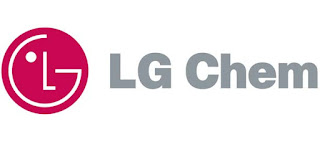LG Chem Comes Out on Top for Now
By Dr Peter Harrop, Chairman, IDTechEx
LG Chem of Korea is one of the big four in Lithium-ion battery manufacture. Unlike its rival Panasonic of Japan it is not closely associated with any one customer like Tesla. Unlike rival Samsung it is not currently damaging its brand with battery fires.
It has a burgeoning orderbook. The Chinese manufacturer Changan wants to introduce no less than 27 new electric and plug-in hybrid models by 2025. The needed batteries will be produced in the LG Chem facility in Nanjing. LG Chem will also supply lithium-ion cells to electric vehicle firm Faraday Future after the two companies formed a partnership.
The two have worked on a bespoke higher density EV battery technology for Faraday Future’s Variable Platform Architecture, the company’s universal and scalable modular battery structure.
Its deal was for a 2.7 trillion won (US$2.40 billion), which, at around $145/ kWh, represents a capacity output of around 16.5 GWh of battery cells— enough for around 200,000 vehicles.
LG Chem worked closely with Faraday Future to create a tailored cell chemistry to optimise the range and safety of the mass production battery hardware, said Tom Wessner, VP of Global Supply Chain, Faraday Future.
UB Lee, the President of Energy Solution Company, LG Chem, said: “We are proud to work alongside Faraday Future as we work together to create the next generation of electric vehicles. Our progress so far represents a major step forward in battery technology, and we look forward to growing our partnership and co-developing hardware into the future.”
At the start of the year, LG Chem announced a deal to manufacture batteries for the plug-in hybrid version of Chrysler Pacifica minivans at its plant in Michigan, US and it also supplies Chevrolet, Volkswagen, Daimler and Nissan despite Nissan having its own battery joint venture AESC.
Farady Future is financed by Chinese tech company LeEco. Farady Future is reportedly planning to produce 140,000 vehicles per year at its $1billion Nevada, US factory, with LeEco setting its sights on producing 400,000 vehicles per year at its $2billion plant in Zhejiang province’s Deqing county, China.
“But who will safely navigate the universal move to difficult silicon anodes in the next three years then to non-flammable electrolytes and then post lithium-ion solid state batteries?” asks Franco Gonzalez, Senior Technology Analyst at IDTechEx who is managing a conference on all this at the IDTechEx Show! in Santa Clara, CA, November 16-17 with over 250 exhibitors and eight parallelconferences with 3500+ paying delegates.
He counsels, “There is everything to play for.” See his report, “Advanced and Post Lithium-ion Batteries 2016-2026: Technologies, Markets, Forecasts” and the IDTechEx report, “Lithium-ion Batteries 2016-2026” for more.
For the LATEST tech updates,
FOLLOW us on our Twitter
LIKE us on our FaceBook
SUBSCRIBE to us on our YouTube Channel!






